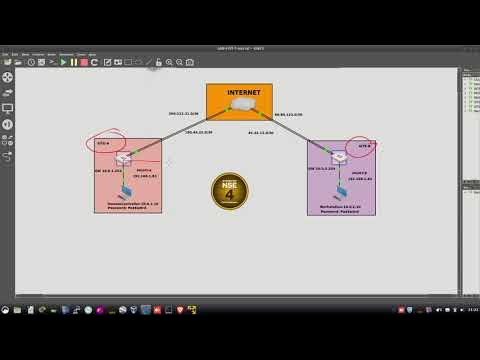Static Routing Using 3 Networks | Cisco Packet Tracer | Networking
Summary
TLDRThis video tutorial covers the concept of static routing in networking. It explains how to assign IP addresses manually to PCs in different networks and configure routers as gateways. The presenter demonstrates setting up three networks with two PCs each, connecting them with switches and routers, and then manually configuring IP addresses and static routes on the routers. The video also discusses the importance of subnet masks and default gateways. Finally, it shows how to test static routing by sending packets between PCs in different networks and handles scenarios where the shortest path is missing.
Takeaways
- 🖥️ Static routing involves manually assigning IP addresses to devices in a network or across different networks.
- 🔌 The setup includes three networks, each with two PCs connected through switches, and a router acts as the gateway.
- 🔧 Connections between PCs and switches, as well as switches to routers, are made using copper straight-through wires.
- 🌐 IP addresses are assigned based on network classes, with Class C being used in this example (192.168.x.x).
- 📍 Subnet masks for Class C networks are set as 255.255.255.0 for all PCs in the network.
- 📲 Each router is configured with the default gateway of its respective network (e.g., 192.168.10.10, 192.168.11.10, etc.).
- 📡 Static routing requires setting up serial connections between routers to establish communication between networks.
- 🚦 The process involves specifying networks, subnet masks, and the next hop for each route.
- 🔄 Static routing differs from dynamic routing (RIP), as paths are manually defined for sending packets.
- ✅ After configuration, a simulation test confirms that packets successfully travel between networks following the defined static routes.
Q & A
What is static routing, and how does it differ from dynamic routing?
-Static routing is a process where IP addresses are manually assigned to devices within the same or different networks. Unlike dynamic routing, static routing does not automatically update routes; each path must be manually configured.
How many networks and PCs are being used in the example for static routing?
-In the example, there are three networks, each with two PCs connected to a switch.
What role does the router play in static routing, according to the script?
-In static routing, the router acts as a gateway, connecting different networks and forwarding packets between them.
What is the significance of using a copper straight-through wire in this setup?
-The copper straight-through wire is used to physically connect devices like PCs, switches, and routers. In this setup, it is used to connect switches to routers via their Fast Ethernet ports.
What is the IP range for a Class C address, and what is its default subnet mask?
-The IP range for a Class C address is from 192.0.0.0 to 223.255.255.255, and its default subnet mask is 255.255.255.0.
How are IP addresses assigned to the PCs in different networks?
-The IP addresses are assigned manually. Each network has a unique third octet, for example, Network A uses 192.168.10.x, Network B uses 192.168.11.x, and Network C uses 192.168.12.x. The first two octets remain the same for all PCs in each respective network.
What are the steps to configure the routers for static routing?
-The routers are configured by assigning a default gateway corresponding to each network. The script walks through assigning these gateways manually, then configuring static routes between routers using their serial ports and assigning unique IP addresses for the paths.
What does the 'Next Hop' refer to in static routing?
-The 'Next Hop' refers to the next router in the path that a packet will take on its journey to the destination network. It is defined manually in static routing configurations.
What happens when a shorter path in the network is unavailable?
-If a shorter path is unavailable, the network will automatically take the longer path to reach the destination, as described in the example where a packet takes the longer path from Network C to Network B when the 11 path is missing.
How is the success of the static routing process verified in the script?
-The success is verified by using the simulation tool, where the user sends a packet from one PC to another in different networks, and upon receiving the packet successfully, the status is marked as 'successful.'
Outlines

This section is available to paid users only. Please upgrade to access this part.
Upgrade NowMindmap

This section is available to paid users only. Please upgrade to access this part.
Upgrade NowKeywords

This section is available to paid users only. Please upgrade to access this part.
Upgrade NowHighlights

This section is available to paid users only. Please upgrade to access this part.
Upgrade NowTranscripts

This section is available to paid users only. Please upgrade to access this part.
Upgrade Now5.0 / 5 (0 votes)





